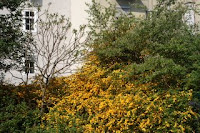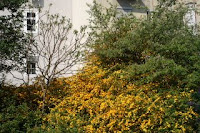In recent years, I have been thinking and reading a lot about religions that exist in today's societies or have existed in the past. My motivation for this research is to gain a deeper understanding of how religions work and how they come into existence.
Especially the origins of religions are hardly ever taught in schools. The main problem with discussing origins is that the observer has to take a view point outside a particular religion. Such thoughts usually contradict the teachings of religions that are based on an eternal God with no beginning. Therefore, the start of a religion is usually claimed to be a particular creation story that is defined within the religion itself. A perfect circular reference. My point of view is that of an outsider. This is the only point of view that allows one to talk about all religions in a fair and objective way.
This posting is my attempt to summarize and define religious terms in simple words. My definitions are based on ideas and thoughts of religious scientists and scholars such as Reza Aslan, Richard Dawkins and others. Feel free to disagree with my definitions and tell me about it in the comments. Since this is a sensitive topic for many people, please keep discussions at a respectful level.
- God(s): A God is a human like being outside the observable universe. Humans can never explore or experience God directly.
- Belief: The desire of humans to communicate with a God and/or the desire to have a higher being who guides ones life. Often, a belief is coupled with a feeling of submission to a particular God.
- Prayer: A personal conversation with God. This can either be a monologue or a group activity. Usually, a response from God is not expected.
- Religion: A predefined language that allows one to communicate with one God (or a group of Gods). Usually, people of one group/tribe share the same religion. People who "speak" one religion have the desire to spread their religion among other people. On the one hand, a shared religion has the power to connect otherwise independent groups of people. On the other hand, two different religions can justify hostility towards a group with another religion.
- Evolution of religions: Usually, one religion does not completely replace an existing religion when it emerges. It rather merges with pre-existing religions or adopts pagan rituals. This is very similar to evolution found in nature or evolution of human languages.
- Prophets: A (usually male) human, who claims to be able to communicate directly with God in order to create new rules for his tribe or group of people. Very often, a prophet creates a new group rather than leading an existing group. The motivation behind the claim of divine origin of his words is that people tend to question godly rules less than those set up by a human being.
- Scripture: A collection of written stories, rules, practices and guidance related to a particular religion. Usually, scripture is written many years after a religion was started or a prophet initiated a new religious movement. Very often, scripture claims divine origin to discourage modifications by humans.
- Heaven: After death, a religion very often promises a believer to join God in paradise. The model of a heaven both motivates the believer to lead a faithful life and also helps cope with another person's death.
- Politics and Religions: Throughout human history, religions and politics have been in symbiosis. In pre-democratic times, a divine justification for a political ruler was desired (e.g. By the grace of god...). How could a simple citizen question a ruler approved by god? But also, religious leaders very often have a political agenda. Secular states try to separate religion and politics due to the many problems that arise when religions and politics work together.
This list of my personal definitions is far from complete and I do not give justifications for my points. As time permits, I will try to elaborate on these definitions in future posts.



